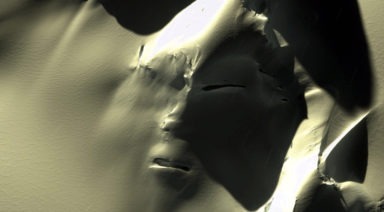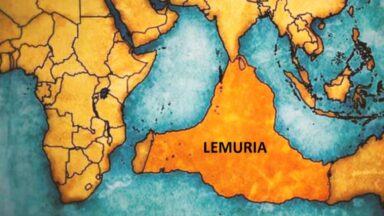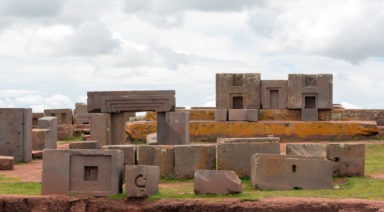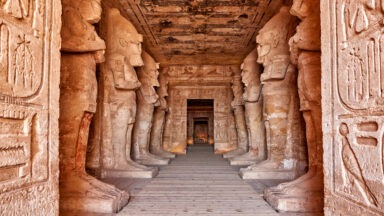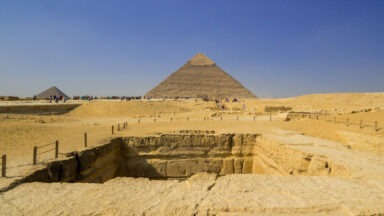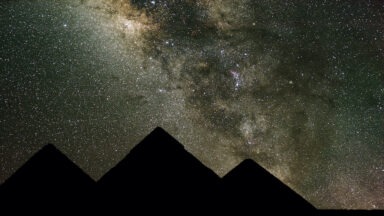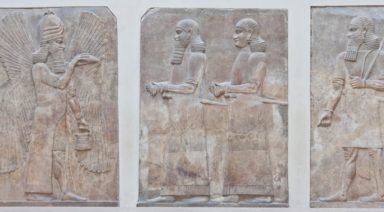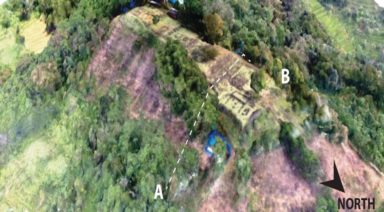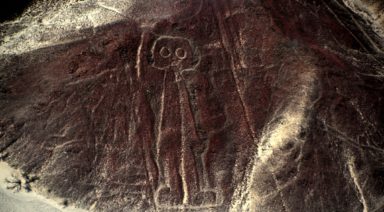The Zone of Silence: An Ancient Mystery of Old Mexico

Because of Mexican engineer and chemist Harry De La Peña’s blond hair and blue eyes, since high school he had been called “El Luminaro,” the Luminous One. After a European education, De La Peña returned to Mexico to teach chemistry at the Instituto Tecnológico de Laguna in Torreon, Mexico. On a blistering day in 1966, he departed Torreon for a photo expedition with a group of friends.
On that day, El Luminaro would stumble into a zone of anomalous paradox. While native mestizos, the ethnically mixed descendants of Anglo and indigenous people, had long known the the area had strange and special qualities, it was now on the radar of a European-trained scientist. The locals believed that couples having trouble conceiving children could visit the Zone with a baby coming nine months later. Notably, Zone locals also had superior dental health with straight white teeth, and random blood samples from Zone residents show far greater health than those from outside the area.
Like the Bermuda Triangle, the Zone of Silence is located on the 27th parallel. Comprised of 1,500 square miles of inhospitable desert and extreme temperatures, there are no roads; only dirt tracks. And travel mishaps are dangerous as it’s difficult to call for help. El Zona del Silencio is an electromagnetic void; an anomaly, where compasses spin like dervishes and cell phone and radio signals are the definition of “hit-and-miss.” Even so, some view these odd reports as “deliberately invented to generate tourism and sold to the world via the mass media.”
Entering El Zona del Silencio
Ceballos, in the Mexican State of Durango, is the point of departure closest to the zone. In 1966 the town, comprised of dirt roads and shacks, was barely on the map. More than 50-years since, the roads are still some combination of dirt, dust and mud, but signs point the way to El Zona del Silencio, and a 16 kilometer rail spur provides access from the outside.
The wise enter the zone with as much ice and water as a vehicle can carry as well as extra gas. Only a fool would forget a hat. During monsoon season the ground becomes a slippery paste, and dry arroyos fill with torrential flood waters in an instant. Daytime temperatures can hit 120F and plummet to freezing after the sun drops below the horizon.
Nopal cactus grow in abundance — on the zone outskirts they have the typical green coloring, but change to pink and purple as one travels deeper into the region. What’s even weirder is that the purple and pink specimens are interspersed with green cactus plants.
Another rare species, the tailless Mapimí tortoise, is native to the area. Foot-long centipedes with purple heads and tails hunt anything they can catch, including mice and birds. Insects grow two to three times normal size, and albino reptiles and snakes are frequently sighted. Today much of the zone is within the boundaries of the Mapimí Biosphere Reserve — the inexplicable flora and fauna are subject to ongoing research.

Purple cactus in Mexico’s Zone of Silence.
The Athena Rocket Enigma
Utah’s Green River, famous among river rafters as a launch site for access to the Colorado River, was once home to a US Air Force and US Army launch complex. Warheads, targeted to the New Mexico White Sands Missile Range, were launched to research velocity and impact. Several classes of missiles, including the Pershing, were tested — the Cold War era facility was officially de-activated in 1983.
The Air Force had also developed a class of rockets, the Athena series, considered a “workhorse” type missile. On July 11, 1970, the Athena-123-D rocket, targeted to White Sands, was launched, but went “rogue,” changing course after fourth stage ignition. The 123-D should have blasted directly into the stratosphere, turning around just short of reaching orbit to arc back for landing at White Sands. Prior to this day, 123-D had been successfully launched and landed 150 times.
But on this Saturday the 123-D unexpectedly sent itself toward Mexico, landing hundreds of miles off-course in El Zona del Silencio. It took weeks for the military to locate the crash site — the rocket was carrying a radioactive payload of cobalt 57. Months of investigation only resulted in theories about why the rocket went rogue — there were no conclusive answers.
The Allende Meteorite
Statistically close-to-impossible numbers of meteorite fragments are scattered far and wide throughout the zone. Some theorize that abnormal levels of natural magnetism are strong enough to account for drawing iron-based meteorites; even “space junk,” debris from human-made technology in decaying orbits around earth, including spent rocket stages and damaged satellites.
But while meteorite showers are nightly events, the Allende was the largest of its kind to ever fall to earth. For clarity, Allende is a rare type of meteorite composed of metals, carbons, hydrocarbons — even amino acids and water, the fundamental stuff of life. The Zone of Silence Allende is considered to be the most significant meteor to hit Earth in modern times.
Arriving at 1 a.m. on Feb. 8, 1969 in a pyrotechnic blitz, the Allende meteorite woke the residents of Ceballos. Some, believing the end of the world had come and fell on their knees in prayer. One hundred miles away, in Chihuahua City, witnesses reported a magnificent blue and white streak arcing through the night sky. Under the assumption of widespread casualties, emergency crews were dispatched to Ceballos, but strangely no one was injured — only stunned and shocked, particularly from the deafening impact that shattered windows all over the village.
Meteors entering Earth’s atmosphere with sonic booms, end-of-world lighting effects and biblical drama tend to explode miles above the planet’s surface, disintegrating into millions of fragments that scatter anticlimactically, in the case of the Allende, across 150 square miles.
Allende meteors are an estimated 4.5 billion years old, possibly born at the time a supernova formed our solar system. Researchers discovered the Zone of Silence Allende Meteor contained the rare aluminum 26, formed during a short period the origins of the universe, and its composition is similar to Earth’s — far more than the Moon.
Discoveries are still being made about the fragments brought to laboratories worldwide. Scientists say that the Allende Meteor fragments, some weighing up to 16-lbs., will be studied for decades to come.
Magnetism
With an electromagnetic field measuring as strong as that of the North Pole, researchers suggest that it is no surprise that the zone draws high amounts of metallic compounds, from meteors to space debris. This also accounts for spinning compass needles and poor radio and cell performance. Unusual plant and animal mutations remain unexplained, but the larger question remains — Why is the zone an anomalous center of almost off-the-charts electromagnetism?
In his out-of-print 1986 book, “The Zone of Silence,” author Gerry Hunt theorized that at some point in the Earth’s history, a massive meteor slammed into what is now the Zone. Likely hundreds of times the size of the Allende, an impact of this scale should have left a massive crater zone, miles across — yet the Zone surface is flat as a Kansas cornfield.
But a behemoth meteor with an exceptionally high iron content could account for the magnetic properties in the Zone if it acquired magnetism in deep space. Hunt explained that the fossil record reveals that the Zone was once under the ancient Cretaceous Sea of Thetis, and impact could have driven the object deep into the sea bed. Over time, the sea bottom would have settled over the object or its exploded fragments, flattening to the Zone’s current topography. A deeply buried, highly magnetic iron-bearing objects(s) would exert powerful force above, below, and throughout the area.
Hunt also cites theories which state that the meteor was actually placed at the location by off-world visitors with a purpose of facilitating space travel. “Even more way-out is the theory that suggests a meteor might been purposely directed toward Earth by some intelligence within the universe,” he wrote.
Zone UFO Phenomena
For decades, Zone residents have observed intricate aerial choreographies involving trembling, racing points of light. The lights travel at high speed and blink in and out of visibility. Some shoot out of the desert floor.
Ranchers and their crews on traditional night rides to protect their herds after sunset regularly observe lights and orbs.
For centuries, cowboys have ridden out at night to defend herds — the Zone ranchers are no exception. Night riders have been regular audiences for these shows, and have enough observational experience to spot the difference between the dancing lights and incoming meteorites.
In his book, Hunt described an interview with Paco Suarez, who told of his first experience with UFO lights. “We saw a box-shaped group of lights hovering to the north very high. There was a mesa in the distance, and it began to lower behind it; then it came toward us from behind the mesa. I admit, I was scared. I sat frozen on my horse.”
Hector Lopez-Loera Ph.d, a professor of geophysics at the National University in Mexico City, confirmed the phenomenon after collecting dozens of eyewitness reports. “There is no doubt the lights exist, but what they are and where they come from is a mystery.”
The Ceballos UFO
On a September evening in 1976, a huge craft was seen hanging silently on the outskirts of Ceballos. Residents gathered to stare at the silent ship, estimated to be two to three hundred feet long. Witnesses said it was rectangular with a curve at the top, and glowed with luminescence. All confirmed colored lights, white, blue and green, at the edges of the craft.
Dogs howled in distress and pigs squealed — the town mayor said all the townspeople had the sensation of being watched and began feeling panicky. After hovering for a few minutes the craft started to move away. Police Chief Chaparro said that he reported the event to authorities in Durango, but “heard nothing more.”
Within the zone there are plenty more unexplainable finding, such as six-mile long rectangle-shaped earthen platforms. A hill formation, discovered by botanist and zoologist Luis Maeda, Ph.d, appears to be human-made, and is covered in non-local stone specimens. Ancient relics, including a human head carved from stone, have been found nearby. For now, biological and environmental research continues, but the mysteries of the Zone of Silence remain unsolved.
Who Were the Ancient Race of Red Haired Giants?

Legends of giants exist around the world and some say they have even found evidence, but mainstream science dismisses giants as a hoax. Is it time for a fresh look at ancient giants?
Giants have been dismissed by science and archeology as a myth but are embraced by many cultures around the world. Globally, there are even structures that would fit the giant narrative, but perhaps most importantly, oral histories, folklore, and even scripture mention giants.
Jack Cary, researcher and author of “Paranormal Planet” has studied this phenomenon for years.
“Indigenous people throughout the entire planet have these oral histories of red-haired giants. And there are a lot of indications and clues as to who the giants were and where they originated,” Cary said.
“One of the most important is Genesis 6:4 in which it describes that the Nephilim were on Earth, they had children by human women, these children were giants…”





